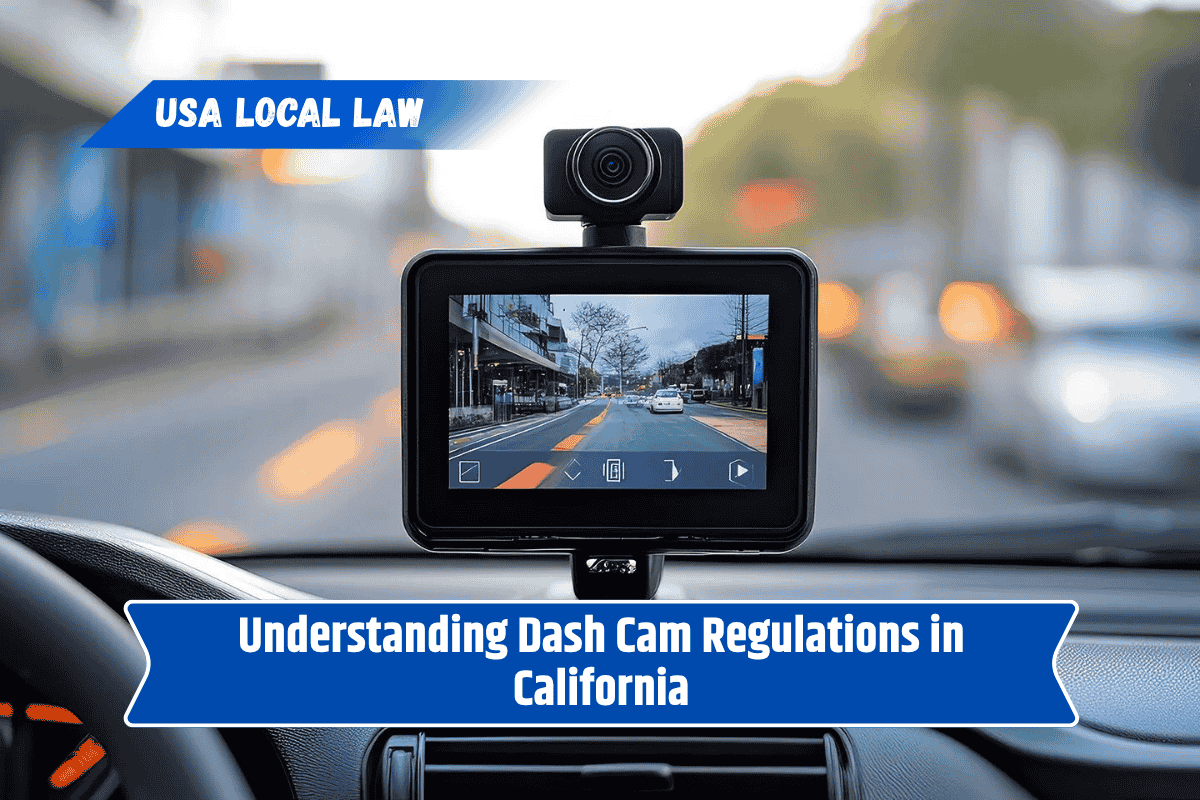Dash cams are becoming more common among drivers across California. These small cameras record video while you’re driving and can help prove what happened in case of an accident or other incidents. But before you install a dash cam in your car, it’s important to know the rules about how and where you can use them in California.
This article will help you understand California’s dash cam laws in simple English so that you don’t break any rules by mistake.
What Is a Dash Cam?
A dash cam, or dashboard camera, is a small camera that records what happens on the road while you drive. Some dash cams also record sound, and others can record inside the car. They are useful in accidents, for insurance claims, or when you want proof of how something happened.
Are Dash Cams Legal in California?
Yes, dash cams are legal in California. But there are some rules you need to follow. California Vehicle Code Section 26708 is the main law that talks about dash cams. It says where you can place the dash cam and what kind you can use.
Where Can You Place the Dash Cam?
California law says that dash cams can’t block your view of the road. So, you must place it in one of these two spots:
In the lower right-hand corner of the windshield
In the upper center area of the windshield, like behind the rearview mirror
The dash cam should not take up more than a 7-inch square on the passenger’s side or a 5-inch square on the driver’s side of the windshield.
If you don’t follow these placement rules, you could get a ticket or fine.
Can Dash Cams Record Audio?
Yes, but only if everyone in the car knows they are being recorded. California is a “two-party consent” state. This means that if you’re recording sound, you must tell passengers that their voices may be recorded. If they don’t know, it’s against the law.
So, if your dash cam has a microphone, make sure to inform passengers before they speak. Some dash cams have stickers or signs that say “Audio recording in progress,” which helps you follow the rules.
Are Rear Dash Cams Legal?
Rear-facing dash cams are also allowed in California. Many people use them to protect their cars when parked or to record what’s happening behind the car. Just like front dash cams, they should not block your view or distract you while driving.
Can You Use Dash Cam Footage in Court?
Yes, dash cam videos are often used in court or for insurance claims. If you are involved in an accident and have clear footage, it may help show who was at fault. However, the video must be recorded legally — that means the camera must be placed properly, and if audio is used, all parties must be aware.
Privacy Concerns
Dash cams must be used responsibly. You should not record people in private places without their permission, and you must not misuse recorded footage. Recording others without consent could lead to legal trouble.
Penalties for Breaking Dash Cam Laws
If you don’t follow the rules, like placing the camera incorrectly or recording audio without consent, you could face:
A fine
Points on your driving record
Problems using the footage in court
It’s always safer to follow the law and use your dash cam the right way.
Using a dash cam in California can give you peace of mind while driving. It helps with insurance claims and can protect you in case of accidents. But you must follow the rules to avoid legal trouble.
Make sure your dash cam is placed properly, doesn’t block your view, and that all passengers know if audio is being recorded. When used legally and responsibly, a dash cam can be a smart and helpful tool on the road.
